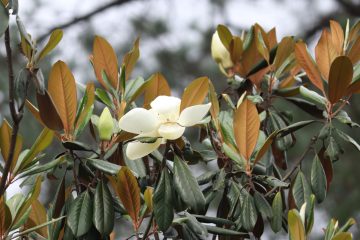Tamke Samlo holds a significant place in the history of agriculture, tracing back to the initiation of the agricultural era when cultivation practices began to evolve. It all started with a man named Sarokpa, who, while tenderly planting paddy and maize, introduced a heartwarming tradition of weaving song into the farming routine. This melodious chant, known as Tamke Samlo, emerged as a soulful ode to the earth, a rhythmic accompaniment to the agricultural rhythm that resonates through generations.
The essence of Tamke Samlo lies not just in the act of planting but also in the stages that follow – weeding and harvesting. With each verse sung softly amidst the rustling leaves or the golden fields, the song carries a spirit of hope and abundance, reminding farmers of the promise that their toil will be rewarded with a bountiful harvest. It is a prayer in music, a hymn of faith in the cycle of sowing and reaping, a timeless tradition that intertwines the labor of the land with the melody of human expression.
As the seeds are carefully sown into the waiting soil, the notes of Tamke Samlo float gently in the air, blending with the chirping of birds and the rustling of leaves. It serves as a poignant reminder of the interconnectedness between man and nature, a harmonious dance of life and growth set to the rhythm of the seasons. Through the verses of this sacred song, farmers invoke blessings upon their fields, seeking the benevolence of the elements to nurture their crops and bring forth a rich bounty.
In the quiet moments of weeding and tending to the growing crops, Tamke Samlo weaves its melody through the laborious tasks, infusing each movement with a sense of purpose and unity. The song becomes a companion in the fields, a comforting presence that uplifts spirits and strengthens resolve during the challenges of nurturing the fragile shoots and protecting them from the elements. It is a reminder that amidst the sweat and toil of farming, there is beauty in the simplest of acts, and a melody that whispers of the cycle of life unfolding with each passing day.
And when the time for harvest arrives, and the fields are ripe with golden grains and swaying stalks, Tamke Samlo rises once again in a crescendo of gratitude and celebration. The harvest song echoes across the fields, a jubilant chorus that heralds the fruits of labor and the bounty of the earth. With each reaping of the crops, the words of Tamke Samlo ring true, a testament to the enduring connection between man and the land, a harmonious symphony of nature’s abundance and human stewardship.
Thus, Tamke Samlo transcends being just a song; it is a living tradition, an embodiment of the timeless bond between mankind and the earth. It weaves a tapestry of culture and sustenance, a melody that resonates through the ages, carrying the hopes and dreams of farmers as they sow, tend, and reap the fruits of their labor. In every note sung, in every field tended, Tamke Samlo stands as a testament to the enduring legacy of agricultural wisdom and the enduring power of music in nurturing both crops and communities alike.




